Uncover why Colombia is a must-visit for gay travelers. Explore destinations like Bogotá, Medellín, and Cartagena, plus learn about Colombian culture, cuisine, and essential safety tips for gay travelers.
As a frequent traveler to Colombia who has explored the country’s iconic destinations and scouted out its gay scenes firsthand, I’ll share my experiences and insights to help you plan the perfect trip. Whether you’re curious about the bustling gay nightlife in Bogotá, the charming streets of Cartagena, or the colorful vibes of Medellín, I’ve got you covered. My guide will combine practical tips making it easier for you to discover Colombia’s inclusivity, charm, and adventure.
Table of Contents
ToggleGAY RIGHTS & SAFETY IN COLOMBIA
Colombia has made significant strides in LGBTQ+ rights, making it one of the most progressive countries in Latin America. Same-sex marriage has been legal since 2016, and adoption rights are extended to same-sex couples. Discrimination based on sexual orientation is prohibited by law, though acceptance levels can vary between urban and rural areas.
For safety, most gay travelers feel comfortable in major cities like Bogotá, Medellín, and Cartagena. However, as with any destination, it’s wise to stay alert, especially in less-touristy areas. Stick to well-populated neighborhoods, and always exercise caution with personal belongings.
Bogotá: Historic Sites, Chapinero & Theatron

Bogotá is a sprawling city that buzzes with energy and creativity. It’s not just the political and cultural capital of Colombia—it’s a hub for LGBTQ+ rights and one of the best places for gay travelers to start their Colombian adventure.
Top Things to Do in Bogotá
➡️ Explore La Candelaria
La Candelaria, Bogotá’s historic center, combines old-world charm with a youthful vibe. Beyond its colonial architecture and iconic landmarks like Bolivar Square, it’s also the heart of Bogotá’s artistic community. Don’t miss the Botero Museum, showcasing works by Colombia’s most famous artist, Fernando Botero. Plus, the street art in this area is some of the most impressive in the world—great for Instagram photos!
➡️ Nightlife in Chapinero
Chapinero, Bogotá’s LGBTQ+ neighborhood, is the place to be after dark. The crown jewel here is Theatron, a massive gay nightclub with multiple dance floors, each playing different genres of music. It’s a safe, inclusive space that welcomes all kinds of people.
➡️ Visit Usaquén
Located in the northern part of the city, Usaquén offers a different side of Bogotá. On Sundays, the Usaquén Market springs to life, with local artisans selling crafts, jewelry, and delicious street food. The neighborhood’s cobblestone streets and quaint cafes make it perfect for a relaxed afternoon.
Why Gay Travelers Love Bogotá
Bogotá’s blend of tradition and modernity makes it a fascinating destination. The LGBTQ+ community here is thriving, with regular events, including the city’s annual Pride Parade every June. With an inclusive atmosphere and an array of things to do, Bogotá sets the tone for your Colombian adventure.
Medellín: Parque Lleras & Trendy Provenza Scene

Medellín’s transformation from a troubled past to a forward-thinking city has been remarkable. Known for its perfect weather, innovative urban design, and open-minded culture, it’s a paradise for travelers seeking adventure and authenticity.
Top Things to Do in Medellín
➡️ Ride the Metrocable to Parque Arví
The Metrocable isn’t just a mode of transportation; it’s an experience. Ride over the city’s hillside neighborhoods, taking in stunning views. At the top, you’ll find Parque Arví, a nature reserve where you can hike, picnic, or simply relax surrounded by lush greenery.
➡️ Comuna 13: A Story of Resilience
Comuna 13 has become a symbol of Medellín’s rebirth. Once one of the city’s most dangerous areas, it’s now a cultural hotspot with vibrant murals, live music, and local art. Guided tours, often led by residents, give you a deep insight into the neighborhood’s inspiring transformation.
➡️ Discover Medellín’s Gay Scene
Medellín’s Gay nightlife thrives in El Poblado, a trendy district filled with stylish bars and clubs. Start your night at Donde Aquellos, a laid-back bar that’s popular with the queer community, before hitting the dance floor at Zero, a club known for its inclusive atmosphere.
Why Gay Travelers Love Medellín
The progressive vibe in Medellín is palpable. The city’s focus on inclusivity and innovation makes it a favorite among gay travelers. Plus, with its friendly locals and welcoming gay-friendly spaces, Medellín feels like home.
Cartagena: Beach, Rumours Festival & History
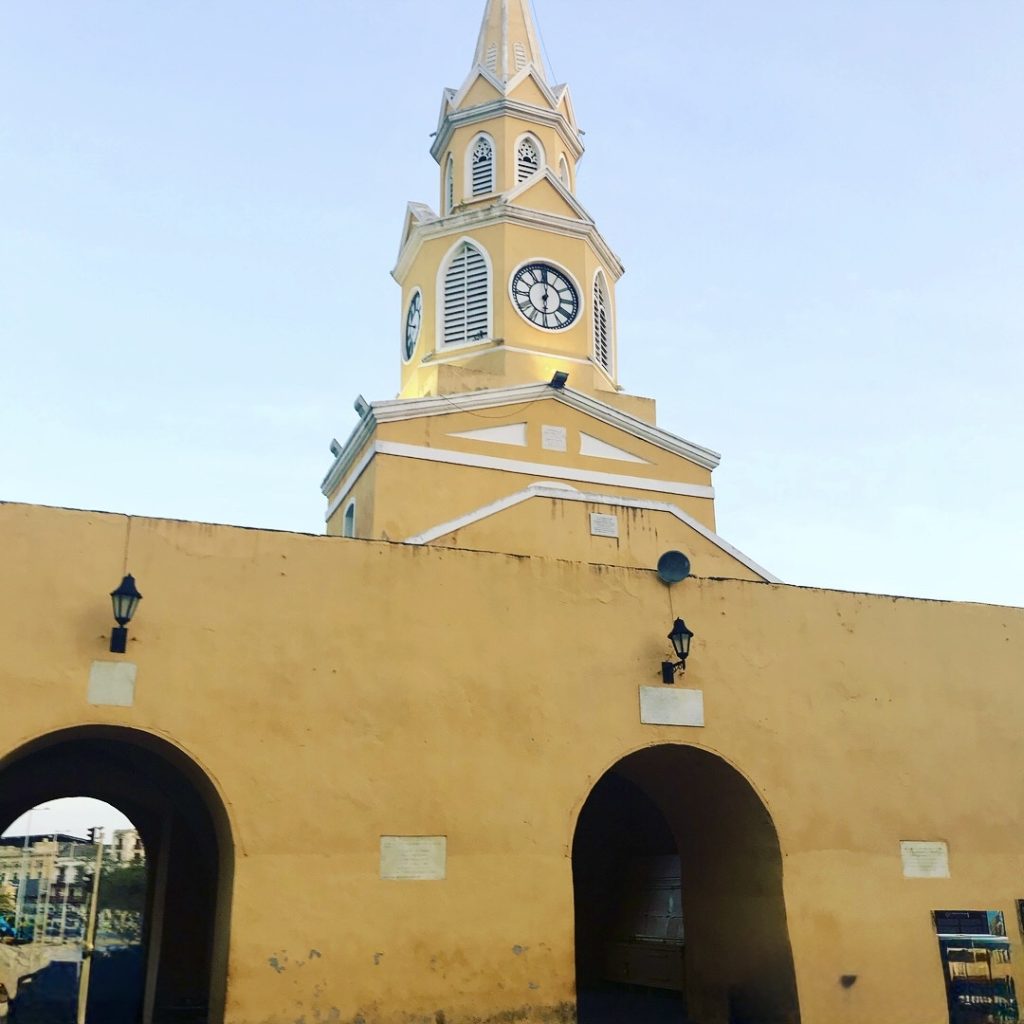
Cartagena is a city that oozes romance and charm. Known for its colonial architecture and Caribbean coastline, it’s the perfect destination for gay travelers who want a mix of culture, relaxation, and adventure.
Top Things to Do in Cartagena
➡️ The Walled City
A UNESCO World Heritage Site, the Walled City is the beating heart of Cartagena. Wander through its colorful streets, visit the Cathedral of Cartagena, and stop for a coffee in one of its picturesque plazas.
➡️ Gay-Friendly Beaches
Head to Playa Blanca or take a boat to the Rosario Islands for a day of sun and sea. These beaches are welcoming to all, and you’ll find plenty of Gay travelers soaking up the rays.
Why Gay Travelers Love Cartagena
Cartagena’s laid-back vibe and growing LGBTQ+ community make it an inviting destination. Its mix of historical charm and modern hospitality ensures there’s something for everyone.
CALI: COLOMBIA’S SALSA CAPITAL
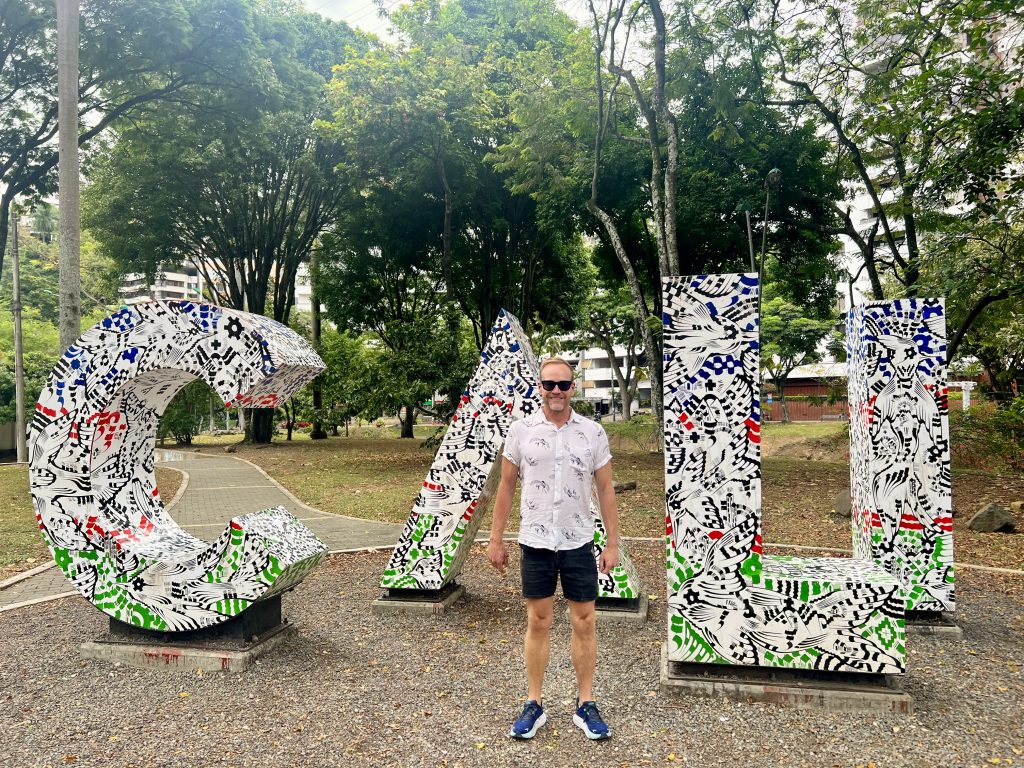
Known as the world’s salsa capital, Cali is full of rhythm, energy, and fun. The city is becoming increasingly popular among gay travelers thanks to its welcoming atmosphere and vibrant nightlife.
Top Things to Do in Cali:
➡️ Take Salsa Lessons at Delirio, the City’s Famous Salsa School
Delirio isn’t just a dance school; it’s an experience that combines music, acrobatics, and culture. Even beginners can learn the basics of salsa while immersing themselves in Cali’s vibrant dance heritage, known as the “salsa capital of the world.”
➡️ Visit San Antonio, a Bohemian Neighborhood Full of Artisan Shops
Wander through cobblestone streets lined with colorful colonial houses and unique boutiques selling handmade crafts. End your visit at the iconic San Antonio Church, which offers panoramic views of the city, especially at sunset.
➡️ Explore the Gay-Friendly Bars in El Peñón, Cali’s Trendiest District
El Peñón is a hub for nightlife, where inclusive spaces like La Matraca offer unforgettable drag shows and live music. Sip on creative cocktails while mingling with Cali’s diverse and welcoming LGBTQ+ community.
Why Gay Travelers Love Cali
Cali’s vibrant energy, rich Afro-Colombian culture, and growing gay scene make it a standout destination for gay travelers. Known as the salsa capital of the world, the city combines dynamic nightlife, inclusive spaces, and warm hospitality, creating an atmosphere where diversity and self-expression thrive. From its gay-friendly clubs to iconic landmarks like the Cristo Rey statue and its lush, green surroundings, Cali offers a unique blend of cultural heritage and modern vibrancy, making it an inviting and unforgettable destination for all.
SANTA MARTA: GATEWAY TO TAYRONA NATIONAL PARK
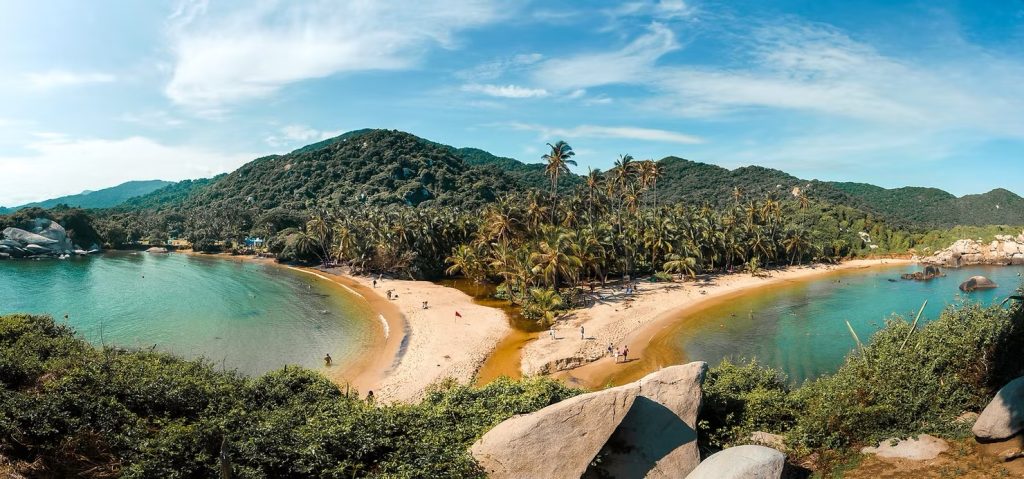
For nature lovers, Santa Marta is a dream destination. From its beautiful beaches to the lush jungles of Tayrona National Park, it’s the perfect spot for adventure and relaxation.
Top Things to Do in Santa Marta
➡️ Hike to Cabo San Juan, Tayrona’s Most Famous Beach
Trek through lush jungle trails in Tayrona National Park to reach the picturesque Cabo San Juan beach, with its golden sands and turquoise waters. Along the way, you’ll encounter wildlife like monkeys and tropical birds, making the journey as memorable as the destination.
➡️ Visit Minca, a Mountain Town Known for Coffee Farms and Waterfalls
Escape the coastal heat by heading to Minca, a serene mountain retreat surrounded by lush greenery. Tour a local coffee farm to learn about the cultivation process, then cool off with a refreshing dip in waterfalls like Pozo Azul or Marinka.
➡️ Dive or Snorkel in Taganga, a Small Fishing Village Nearby
Taganga’s calm, crystal-clear waters make it an ideal spot for underwater adventures, with vibrant coral reefs and abundant marine life. Whether you’re a beginner or a seasoned diver, local operators provide guided experiences to explore the Caribbean’s aquatic treasures.
Why Gay Travelers Love Santa Marta
Santa Marta’s stunning natural beauty, laid-back Caribbean vibe, and welcoming atmosphere make it an appealing destination for gay travelers. As the gateway to Tayrona National Park and the Sierra Nevada mountains, Santa Marta offers a perfect mix of adventure, relaxation, and culture. Its growing gay scene, friendly locals, and inclusive spaces create an inviting environment where diversity is embraced. Whether enjoying the vibrant nightlife, exploring the pristine beaches, or soaking in the city’s rich history, Santa Marta provides an unforgettable experience for travelers seeking both tranquility and authenticity.
SAN ANDRES: ISLAND PARADISE

San Andrés is a tropical island in the Caribbean, known for its crystal-clear waters and coral reefs. It’s perfect for gay couples looking for a romantic getaway.
Top Things to Do in San Andrés
➡️ Snorkel in the “Sea of Seven Colors”
The crystal-clear waters of San Andrés boast stunning shades of blue and green, making snorkeling an unforgettable experience. Dive into vibrant coral reefs teeming with tropical fish, sea turtles, and other marine life.
➡️ Rent a Golf Cart and Explore the Island
Renting a golf cart is the perfect way to leisurely explore San Andrés’ hidden gems, from secluded beaches to local eateries. Stop at landmarks like the Morgan’s Cave or the Hoyo Soplador, a natural sea geyser that shoots water high into the air.
➡️ Visit the Smaller Nearby Island of Johnny Cay for a Day Trip
Just a short boat ride from San Andrés, Johnny Cay offers pristine white-sand beaches and swaying palm trees. Spend the day relaxing, enjoying fresh seafood, or snorkeling along its vibrant coral reefs.
Why Gay Travelers Love San Andres
San Andrés Island’s tropical paradise, crystal-clear waters, and vibrant Caribbean culture make it a favorite for gay travelers seeking relaxation and adventure. Known for its breathtaking beaches, world-class snorkeling, and lively reggae-infused atmosphere, the island offers a welcoming and inclusive vibe. The laid-back attitude of locals and the island’s reputation for warmth and diversity create a safe and inviting environment for gay visitors. Whether exploring the colorful underwater world, savoring fresh seafood, or enjoying the island’s tranquil sunsets, San Andrés provides an idyllic escape where travelers can feel free to be themselves.
Barranquilla: Carnival, Guacherna & LGBTQ Events
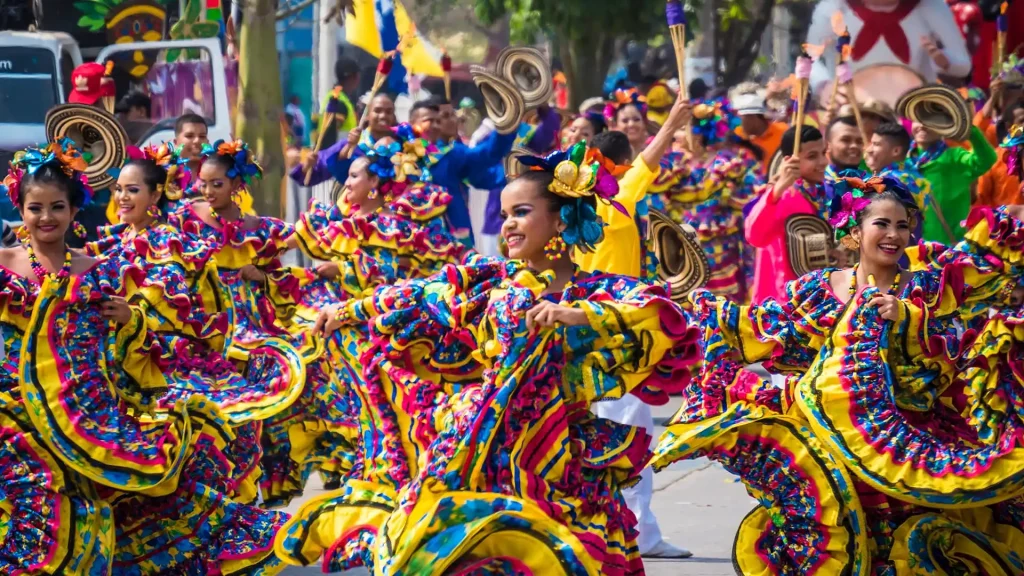
Barranquilla is a vibrant coastal city famous for its lively atmosphere and rich cultural heritage. Known as the home of Colombia’s most extravagant Carnival, it’s an exciting destination for gay travelers looking to immerse themselves in festive traditions and tropical vibes.
Top Things to Do in Barranquilla
➡️ Experience the World-Famous Barranquilla Carnival
Held every February or March, Barranquilla’s Carnival is a UNESCO-recognized celebration of music, dance, and colorful parades. Don your best outfit and join the revelry in the streets, where you’ll encounter vibrant costumes, live music, and a welcoming energy.
➡️ Stroll Through the Old Town and Visit Plaza de la Paz
Discover Barranquilla’s historic charm in the Old Town, where colonial architecture meets bustling plazas. Plaza de la Paz is a great starting point, surrounded by landmarks like the Metropolitan Cathedral and filled with local vendors offering authentic Colombian street food.
➡️ Relax at Bocas de Ceniza
Take a short boat ride to Bocas de Ceniza, where the Magdalena River meets the Caribbean Sea. This tranquil spot is perfect for watching the unique blend of blue and brown waters, enjoying fresh seafood, and soaking up Barranquilla’s coastal beauty.
Why Gay Travelers Love Barranquilla
Barranquilla’s vibrant culture, infectious energy, and emerging gay scene make it a hidden gem for gay travelers. Known as the home of Colombia’s most famous Carnival, the city is alive with music, dance, and celebration year-round, offering a welcoming environment for all. Its growing number of gay-friendly spaces, combined with its friendly locals and rich Afro-Caribbean heritage, create an atmosphere of inclusivity and joy. From exploring its cultural landmarks to experiencing its lively nightlife, Barranquilla offers a unique blend of tradition and modernity, making it an exciting and welcoming destination for gay travelers.
THE LOW DOWN ON COLOMBIAN CUISINE
Colombia’s culinary scene is as diverse as its landscapes, offering flavors that reflect the country’s rich cultural heritage. Whether you’re enjoying street food or dining in upscale restaurants, these dishes are essential to any Colombian food adventure.
- Arepas: Corn Cakes Stuffed with Cheese, Meat, or Eggs.
- These versatile corn cakes are a staple across Colombia, with regional variations that make them unique in every city. From buttery, cheese-filled arepas in Bogotá to arepas de huevo (fried arepas with egg) on the Caribbean coast, there’s an arepa for every craving.
- Bandeja Paisa: A Hearty Platter with Beans, Rice, Plantains, and Chorizo.
- Known as Colombia’s national dish, this plate is a feast for the hungry traveler, often including avocado, fried pork belly (chicharrón), and a fried egg on top. Originating in the Paisa region, it’s a symbol of Colombian hospitality and a must-try for meat lovers.
- Ceviche: Freshly Prepared Seafood, Especially Popular on the Coast.
- Colombia’s take on ceviche includes a zesty mix of lime, cilantro, and fresh seafood like shrimp or fish, often served with crunchy plantain chips. Coastal cities like Cartagena and Santa Marta are perfect for sampling this refreshing dish while enjoying ocean views.
Pair these dishes with local drinks like aguardiente, a sugarcane-based anise-flavored liquor that’s best enjoyed with friends, or fresh fruit juices, made from exotic fruits like lulo, guanábana, or maracuyá. These beverages add the perfect touch to a truly Colombian dining experience.
FAQS
How do I get to Colombia?
Colombia is well-connected to major international hubs, making it relatively easy to reach. Most travelers arrive via one of its main international airports:
- El Dorado International Airport in Bogotá: The busiest airport in Colombia with direct flights from North America, Europe, and other parts of Latin America.
- José María Córdova International Airport in Medellín: A great option for those flying directly to Medellín.
- Rafael Núñez International Airport in Cartagena: Ideal for those starting their trip on the Caribbean coast.
Flights to Colombia are often affordable, especially from the U.S., with direct options from cities like Miami, New York, and Houston.
For regional travel within South America, budget airlines like Viva Air and LATAM are convenient and cost-effective.
When is the best time to visit Colombia?
- Colombia is a year-round destination due to its diverse climates and geography. However, certain times of the year are better depending on your interests:
- December to March (Dry Season): Ideal for outdoor activities, exploring national parks, and enjoying sunny weather. It’s also the high season, so expect more crowds and higher prices.
- April to November (Rainy Season): While some regions see more rain, this is the best time for lush landscapes, fewer tourists, and lower prices. Coastal areas like Cartagena remain sunny year-round.
For festivals and cultural events, time your trip with:
- Carnival of Barranquilla (February): Colombia’s second-largest carnival after Rio’s.
- Pride Month (June): Bogotá, Medellín, and other cities host vibrant LGBTQ+ Pride parades and events.
What should I pack for a trip to Colombia?
Packing for Colombia depends on the regions you’re visiting, as the country’s climate varies significantly:
Warm weather (Cartagena, San Andrés, Santa Marta):
- Lightweight clothing (linen shirts, shorts, dresses).
- Swimwear, sunglasses, and a sunhat.
- Reef-safe sunscreen and flip-flops for beaches.
Cooler weather (Bogotá, Medellín):
- A light jacket or sweater for chilly mornings and evenings.
- Long pants and closed-toe shoes for city exploration.
Nature adventures (Tayrona National Park, Minca):
- Hiking boots or sturdy shoes.
- A reusable water bottle, insect repellent, and a rain poncho.
General essentials include a daypack, travel insurance, and any prescription medications you may need.
Is it safe to travel to Colombia as a gay couple?
Yes, Colombia is one of the most LGBTQ+-friendly countries in Latin America. Same-sex marriage has been legal since 2016, and discrimination based on sexual orientation is prohibited by law.
In cities like Bogotá, Medellín, and Cartagena, gay couples can feel comfortable holding hands or expressing affection in public, particularly in LGBTQ+-friendly neighborhoods like Chapinero (Bogotá) and El Poblado (Medellín).
That said, as with any destination, exercise caution in rural or conservative areas where attitudes may be less progressive. Stick to well-traveled areas, avoid walking alone late at night, and use reputable transportation options.
Do I need a visa to visit Colombia?
Citizens of most countries, including the U.S., Canada, and the European Union, do not need a visa for stays of up to 90 days. Upon arrival, you’ll receive a Tourist Entry Stamp, which can sometimes be extended for an additional 90 days.
Make sure your passport is valid for at least six months beyond your travel dates, and check with your local Colombian consulate for the most up-to-date visa requirements.
Is Colombia affordable for travelers?
Yes! Colombia is considered a budget-friendly destination, offering excellent value for money. Here’s a breakdown:
- Accommodations: Hostels and budget hotels start at $10–$20 per night, while mid-range hotels and boutique stays cost $50–$100. Luxury accommodations are also reasonably priced.
- Food and Drinks: A meal at a local restaurant (menu del día) costs around $3–$5, while fine dining can cost $15–$30. Cocktails are often $5–$8.
- Transportation: Public buses and metros are cheap, costing less than $1 per ride. Domestic flights can be found for as little as $30–$50 if booked in advance.
How do I get around Colombia?
Colombia has a well-developed transportation network:
- Domestic Flights: Perfect for covering large distances quickly. Airlines like Avianca and Viva Air connect major cities.
- Buses: Long-distance buses are affordable and comfortable, though trips can take several hours. Companies like Bolivariano and Expreso Brasilia are reliable.
- Taxis and Ride-Sharing Apps: Uber, Cabify, and DiDi operate in most cities, offering safer and more convenient options than hailing a street taxi.
- Public Transport: Bogotá and Medellín have efficient public transit systems, including the TransMilenio (Bogotá) and Metro (Medellín).
What are some LGBTQ+-specific events in Colombia?
Colombia has a growing number of LGBTQ+ events, festivals, and gatherings:
- Bogotá Pride (June): A vibrant celebration featuring parades, parties, and cultural events.
- Medellín Pride (June/July): Known for its colorful parade and inclusive spirit.
- Theatron Weekend Events (Bogotá): Theatron hosts themed parties year-round, attracting LGBTQ+ visitors from around the world.
What vaccinations do I need for Colombia?
While no vaccinations are mandatory for entry, the following are recommended by the CDC:
- Yellow Fever: Required for certain regions, especially if visiting the Amazon or Tayrona National Park.
- Hepatitis A and B: Recommended for all travelers.
- Typhoid: For those planning to eat street food or visit rural areas.
Pack a basic travel medical kit with items like antidiarrheal medicine, hand sanitizer, and insect repellent to prevent mosquito-borne diseases.
Can I drink tap water in Colombia?
In major cities like Bogotá and Medellín, tap water is safe to drink. However, in rural areas and along the coast (e.g., Cartagena), stick to bottled or filtered water. Bring a reusable water bottle with a filter for eco-friendly hydration.
What’s the currency in Colombia, and how do I manage money?
The currency in Colombia is the Colombian Peso (COP). ATMs are widely available in cities and towns, and credit cards are accepted at most hotels, restaurants, and shops. However, cash is still king for small vendors and markets.
Pro tip: Use apps like XE Currency to track exchange rates, and always notify your bank of your travel plans to avoid issues with your cards.
How can I stay connected while in Colombia?
Colombia offers excellent cell phone coverage, and you can easily stay connected by purchasing a local SIM card from providers like Claro, Movistar, or Tigo. These cost about $5 and include data packages for navigating maps or social media. Many cafes, restaurants, and hotels also offer free Wi-Fi.
Are Colombians friendly toward gay travelers?
Yes! Colombians are known for their warmth and hospitality, and the country has made significant progress in LGBTQ+ acceptance. While you may encounter occasional prejudice in conservative areas, cities like Bogotá, Medellín, and Cartagena are very gay-friendly.
What’s the tipping culture in Colombia?
Tipping is appreciated but not always expected:
- Restaurants: A 10% service charge is usually included. If not, leaving 10% is customary.
- Hotels: Tip porters $1–$2 per bag.
- Taxis: Tipping is not required, but rounding up the fare is polite.
Is Colombia a good destination for solo gay travelers?
Absolutely! Colombia’s major cities are safe, vibrant, and welcoming for solo gay travelers. There are plenty of gay-friendly hostels, bars, and events where you can meet other travelers. Plus, Colombians are sociable, making it easy to strike up conversations and make friends along the way.
Can you provide more resources too plan my trip to Colombia?
NOMADIC BOYS – NICE LGBTQ+ GUIDE TO COLOMBIA
OUT IN COLOMBIA -LGBTQ+ TOURS IN COLOMBIA
FINAL THOUGHTS
Colombia is a treasure trove of experiences, especially for gay travelers. From its vibrant cities to its beautiful beaches, every corner of the country offers something unique. Add in its progressive LGBTQ+ rights and inclusive culture, and you’ve got a destination that’s truly worth visiting.
So, is Colombia worth visiting for gay travelers? Without a doubt!
About the Author
Tim is a seasoned gay travel writer and the creator of Out in Mexico, a dedicated resource for gay travelers exploring Mexico’s and Latin America’s vibrant destinations. After relocating to Guadalajara, he has spent years immersing himself in Latin American gay culture, from the iconic beaches of Puerto Vallarta to the nightlife of Mexico City.
With firsthand experience in the Latin American gay scene, Tim has personally visited the bars, hotels, and events featured in this guide. His insights have helped gay travelers plan unforgettable trips while ensuring they feel safe, welcomed, and informed.
When he’s not writing, you’ll find him sipping a mezcal cocktail at a bar in Colonia Americana or travel to a new exciting destination in Latin America.
📍 Follow his adventures: @i.am.out.in.mexico
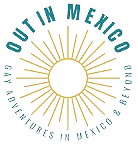

No Comments